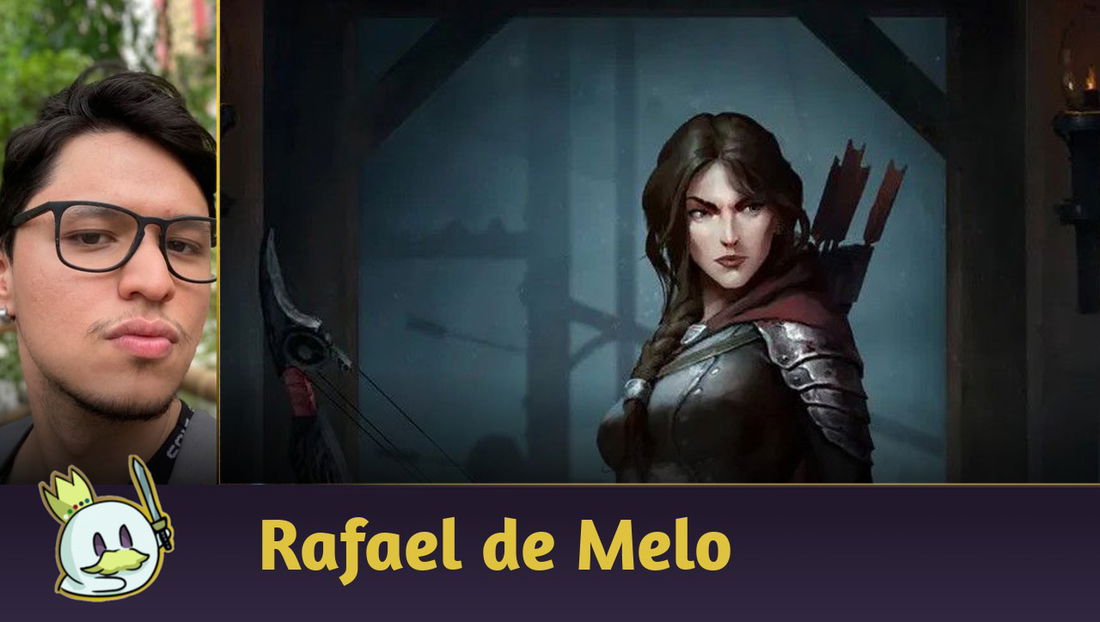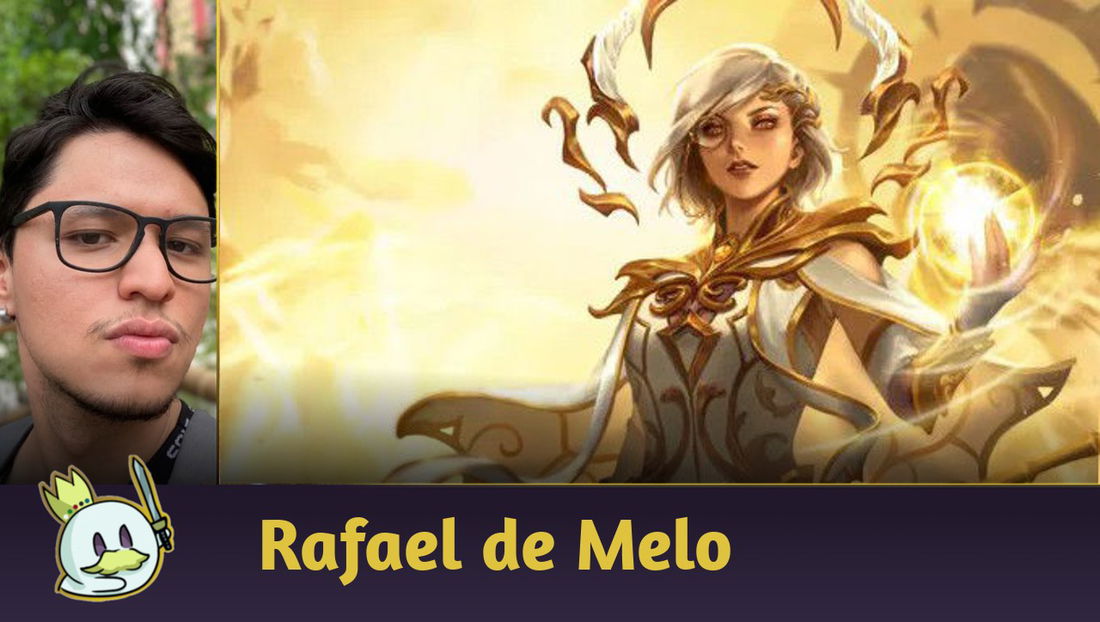Introduction
Part the Mistveil has definitely shown us how powerful it is. Zen, Tamer of Purpose kicked off one of the most critical moments in the history of the game, Enigma, Ledger of Ancestry is currently one of the best meta decks, and Nuu, Alluring Desire is already the best Assassin around. In other formats like Commoner, this set was quite impactful as well.
Today, let's dive into what has been my favorite Commoner deck, Enigma, the new Illusionist, and see why she has become one of the most powerful decks in the format!
Illusionist in Commoner

Illusionist has never been a great class in Commoner. For instance, without Luminaris, Prism is forced to play many attacks with Phantasms that are easily destroyed by any other deck in the format. Dromai can't play her rare dragons; instead, she can only rely on Aether Ashwing and many red cards that are not as efficient as you'd like. So, why does Enigma stand out?

Because of her ability and the array of cards available, Enigma is the only Illusionist that can create a decent board state in Commoner with her auras, similar to what other Illusionists do in Blitz/Classic Constructed. She doesn't need to rely on attacks with Phantasm to win the game, and several of her more essential auras/actions are commons. Her weapon, Cosmo, Scroll of Ancestral Tapestry, is also available in this format.
The Deck
Before we explore this list and discuss each card, let's understand how Enigma wins the game and what she can play.
First, let's take a look at her Signature Weapon: Cosmo, Scroll of Ancestral Tapestry.

Cosmo turns all your auras into weapons, which means you can use any auras with Ward on the board to attack. As Enigma discounts the cost of the first Spectral Shield you play by one resource, early on you'll be able to attack with Spectral Shield every turn for nothing at all. And if you decide to keep as many of these auras on the board as you can, you can attack your opponent with it bit by bit and eventually put them in really uncomfortable situations.
As if that weren't enough, if your auras have one or more counters, they'll have go again. So, the more space your opponent gives you, the more auras you'll have on the board and the more attacks you'll be able to use. This means Enigma's damage output is one of the highest in the entire format - and with just a few cards.
The goal is to protect your auras as much as you can, and win the game through their attacks.
I built this list myself, but I based it on a few lists from Classic Constructed that performed well. Then, I just adapted it for Commoner.
Let's split this deck into three parts: offensive reds, defensive reds, and blues.
Offensive Reds

The most important cards in this deck are the red cards that help you build your board.
You might struggle to get counters for Waning Vengeance (1) (though it's not impossible), but the fact it gives you a Spectral Shield is more than enough to earn a spot in this list. Waxing Specter gets counters on its own and, if you play it on your turn, you can attack with it and go again for four power. Spectral Manifestations creates a Spectral Shield with many counters.
In many situations, putting these auras on the board and protecting them is enough to win a few games. Occasionally, that won't be possible, but we'll discuss more alternatives later on.

Battlefront Bastion (1) may buy us some time because it is purely a value play (it costs 3 but has 7 power), but its true potential is in its defensive ability. Though it only blocks 2, the fact it prevents the next 1 damage means it actually "blocks 3", and it can also protect us against small amounts of damage dealt by Ninjas, for instance. It is certainly one of the best commons from this set.
Defensive Reds
Your auras are defensive on their own because they have Ward, but we also added a few other cards to keep them on the board.

I added the most iconic defensive cards in the format because they're simply the best at what they do. Sink Below (1) and Fate Foreseen (1) are the best 0-cost defense reactions. Oasis Respite (1) deals with cards with Dominate and also prevents arcane damage, and Unmovable (1) is useful against decks that play giant attacks, like Guardians and Brutes.
Blues
The other cards I added are just various types of blues. We won't play yellows, both because we can't use them to pay for our cards and because several other Mystic cards interact with other blue cards. So, we'll use a mix of great offensive cards in this color as well as defensive cards and a few blues that transcend.

Thanks to the Illusionist class, we have many above-average blue attacks with Phantasm, to balance. Though it is a bit risky to play them against many decks, they're excellent to buy some time in a few matches, and all block for three: Enigma Chimera (3) only costs two, Phantasmal Haze (3) creates Spectral Shield, Spectral Rider (3) is difficult to block, and Spears of Surreality (3) with Spectral Prowler (3) is a great play.

Considering Battlefront Bastion (1) is exceptional for defensive plays, there's no reason to not use its blue version. Furthermore, Brothers in Arms (3) is also great when we need to defend ourselves. Though it costs one to defend four, we can use two other resources to create an aura at instant speed, use our equipment cards, or prevent damage with Oasis Respite (1).

Here are a few other auras that aren't the best but deserve a spot in this list, both because they block for three and because they're blue. Furthermore, they're valuable on turn zero (the very first turn in the game), as this way you'll already start the game with some type of Ward on the board. Unmovable (1) completes your defensive kit.
As any Mystic hero, a set of instants that transcend is also a must in this deck. How many of them you should use is up to you. We'll use six cards, but using less is understandable (four or five, for instance).

This set basically includes cards that don't need to be played on any targets to resolve or have easy targets. We'll always want to transcend to get Inner Chi and use our hero's ability.
Weapons and Equipment
Now let's see the equipment and weapons we use.

We've already discussed how Cosmo, Scroll of Ancestral Tapestry is essential for this deck, and, if your opponent doesn't respect you, stacking this many auras will be deadly. However, keeping several auras on the board against decks that attack several times bit by bit (Ninjas, for instance) might be slightly difficult. As a result, you can use Reality Refractor to present damage without many auras in play.
Thanks to our hero's ability, attacking with a Spectral Shield and one counter threatens six damage for just one resource.

Ironhide Plate and Ironhide Legs are pretty straightforward: you'll use them to get the most out of any resources you have left and block better. Uphold Tradition and Truths Retold are mainly supposed to defend you with Ward 1, but their abilities are also quite useful. Whereas Truths Retold puts an aura back in your deck, Uphold Tradition buffs an aura's attack.
Lastly, we use Blossom of Spring alongside Reality Refractor, mainly so, when we use our entire hand to block, we can break our equipment to gain one resource and attack with Spectral Shield.
Tips and Matchups
This deck is a bit difficult to play, so here are a few tips on how to do it:
- Don't get too attached to your auras. In some situations, the best play is letting them go to rebuild your board;
- You can use Inner Chi to pay for anything, not only your hero's ability;
- If you play one of your instant Mystics, keep priority, and play another one right afterward, you'll transcend twice, and they'll both return to your hand already transformed;
- Your hero's ability is an instant, so you can create a Spectral Shield on your opponent's turn;
- In some matches, the best strategy you can use is fatiguing your opponent. Pay attention to which blue cards you're pitching so you can set up a stronger late game;
Different matchups require different weapons, in general:
> Cosmo is best against opponents who don't play sequenced attacks and Wizards (for instance, Bravo, Oldhim, Iyslander, Olympia, and others);
> Refractor is best against opponents who play many sequenced attacks and/or that fatigue themselves (for instance, Chane, Dash, Fai, Kayo, and others).
You should also use the only Unmovable (1) in your inventory and remove any other blue with Phantasm if you're against decks that play giant attacks.
Final Words
This set might have just come out, but Enigma is already performing well in Commoner events. I brought this list to the national that took place in July and managed to get to top 8 at both of its events, so this hero can definitely conquer some space in a meta full of Ira, Crimson Haze.
Enigma can undoubtedly become the next best thing, considering Chane is gaining some traction thanks to Rosetta!
What about you? What did you think of this list? Tell us your thoughts in our comment section below.
Thank you for reading, and see you next time!














— Comentários 0
, Reações 1
Seja o primeiro a comentar